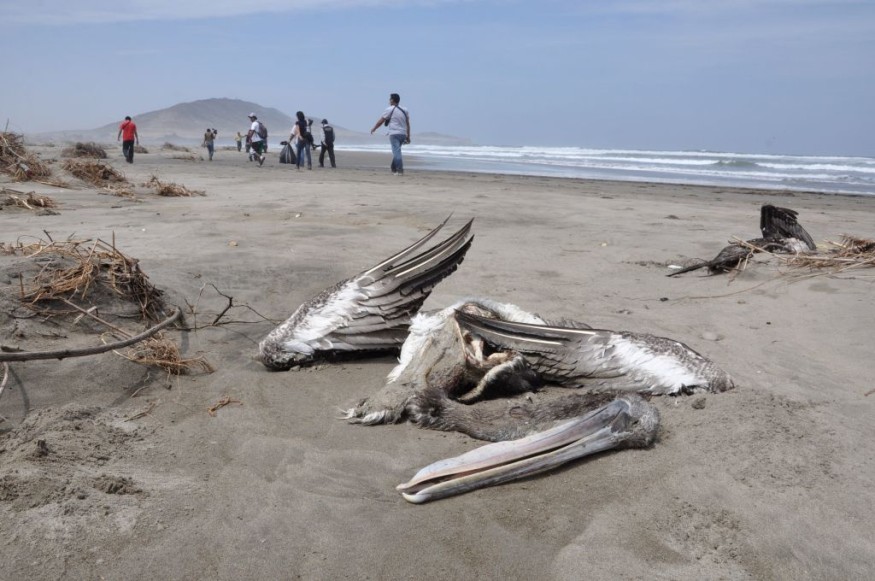Bird Flu Outbreak in Peru: More Than 13,000 Pelicans, Other Seabirds Found Dead in Several Beaches

More than 13,000 wild seabirds, many of them pelicans, have been found dead in Peru due to bird flu, according to the National Forestry and Wildlife Service (Serfor).
BBC reported that several beaches were littered with the remains of dead animals, with some of them found in protected areas. In a statement on Tuesday, Serfor noted that it had located the bodies of 10,257 dead pelicans and more than 3,500 marine boobies, among other species, La Prensa reported.
According to biologists, the birds have been killed by the H5N1 avian influenza strain. Peru's agricultural health authorities had warned people not to handle wild birds or their carcasses. They also said the public should contact or notify them if they see any dead animals in their area.
Peru has already declared a 180-day nationwide health alert on November 24 after detecting the presence of highly pathogenic bird flu to prevent its spread to farm poultry. H5N1 can spread quickly between birds through their droppings and saliva.
Although the virus can spread to humans if they are in close contact with an infected bird, scientists noted that the current strain seems low risk for this. Seabirds were reportedly hit hard by the bird flu outbreak, which is also being experienced in the United States and Europe.
Peru and Ecuador Declare Animal Health Emergency
According to France 24, Peru's agricultural health agency said it had quarantined the town of Gallito in the northern coastal Lambayeque region to control the first bird flu outbreak on a poultry farm.
The agency noted that the health alert was a precautionary measure due to the virus from North American migratory birds that could spread to "backyard birds," known as ducks and chickens.
The United Nations' Food and Agriculture Organizations noted earlier this year that South and Central America countries should be on "high alert" for the bird flu virus.
The country's agricultural health agency has mandated that all birds in a detected outbreak must be slaughtered and buried at least two meters deep. Peru's wildlife and forestry service official, Doris Rodriguez, said around 13,800 birds have died from bird flu, including some 10,000 pelicans.
In Ecuador, the bird flu outbreak was first detected over the weekend at a poultry farm in the Andean province of Cotopaxi. It has led to quarantine measures across possibly infected areas.
In a statement, Ecuador's agriculture ministry said around 180,000 birds in the area will be slaughtered to prevent the spread of the virus. It added that moving birds, products, and by-products of avian origin, such as chickens and eggs, will not be possible during the next 90 days.
Bird Flu in the United States
There is no treatment for bird flu. It naturally spreads between wild birds and can also affect domestic poultry. In the United States, more than 52.4 million birds have died of avian influenza as of Monday, making it the deadliest outbreak in history and surpassing the 2015 outbreak that killed 50.5 million birds.
The Centers for Disease Control and Prevention (CDC) said Avian flu viruses do not usually infect people. But there have been rare cases, mostly when humans come into contact with mucus, saliva, and feces that had the virus or inhaled them.
The CDC noted that symptoms of bird flu could range from mild to severe and sometimes death. The outbreak was believed to have originated from wild birds, with the highly pathogenic strain of avian influenza found mainly in North Carolina and South Carolina.
READ MORE : Parts of Amazon Rainforest in Brazil Are Being Illegally Offered for Sale on Facebook Marketplace
This article is owned by Latin Post.
Written by: Mary Webber
WATCH: Thousands of Pelicans Die in Peru After Bird Flu Outbreak - From the Star
Subscribe to Latin Post!
Sign up for our free newsletter for the Latest coverage!
© 2026 Latin Post. All rights reserved. Do not reproduce without permission.















